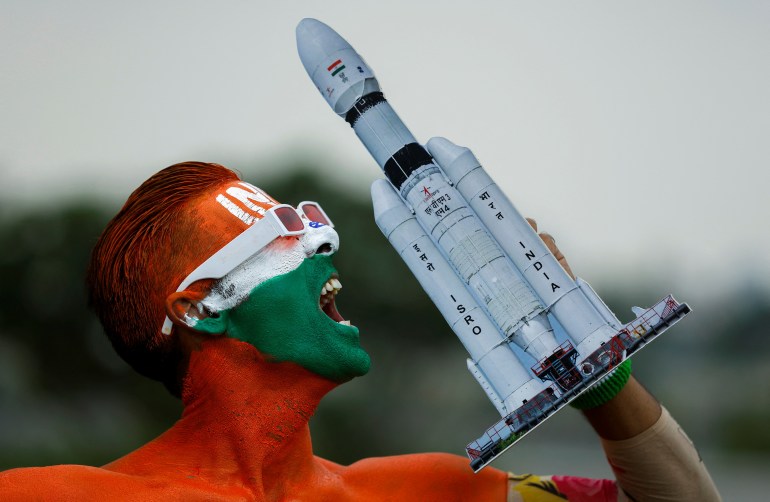Chandrayaan-2 mission should give all of India a cause for celebrations. Just 75 years ago regarded as a third world country, India is now at the very edge of technological achievements. I've spent a ton of time over there teaching developers how to program in various languages and loved it. The people are fun loving, eager and smile more than most in North America. So how did we get here?
On September 6, 2019, India achieved a momentous milestone in its space exploration journey by successfully landing the Vikram lander of the Chandrayaan-2 mission on the lunar surface. The achievement placed India among a select group of nations capable of performing soft landings on the Moon, showcasing the country's technological prowess and commitment to space exploration.
Chandrayaan-2 was the Indian Space Research Organisation's (ISRO) second lunar exploration mission, following the success of Chandrayaan-1 in 2008. The mission's primary objective was to further investigate the Moon's south pole region, where water ice was suspected to exist in permanently shadowed craters. The presence of water on the Moon could hold significant implications for future lunar habitation and space exploration.
The Chandrayaan-2 mission was comprised of three main components: the Orbiter, the Vikram lander, and the Pragyan rover. The Orbiter, equipped with advanced scientific instruments, played a crucial role in mapping the lunar surface, studying the exosphere, and analyzing minerals. The Pragyan rover was designed to explore the surface and analyze soil samples.
The most critical phase of the Chandrayaan-2 mission was the descent of the Vikram lander to the Moon's surface. The world watched anxiously as the lander initiated its descent. However, as it approached the lunar surface during the final stages of its journey, communication with the lander was lost. The nation held its breath as ISRO engineers worked tirelessly to re-establish contact. After several tense moments, ISRO confirmed that the Vikram lander had experienced a hard landing, a setback that could have potentially overshadowed the entire mission. Despite the challenges, India's Prime Minister Narendra Modi praised the ISRO team's dedication and encouraged them to persevere in the face of adversity.
The discovery of water molecules on the lunar surface by the Orbiter was one of the mission's major accomplishments. This finding not only bolstered the scientific community's understanding of the Moon's geology and evolution but also opened doors to the possibility of sustainable human exploration on the lunar surface. Well done India!

A Young Indian Space Enthusiast - courtesy Al Jazeera
India's space program has always been about more than just technological achievements; it's about inspiring future generations to dream big and pursue careers in science, technology, engineering, and mathematics (STEM) fields. Chandrayaan-2 exemplified this by sparking the imagination of young minds across the country.
I suspect today, there are armies of young Indian women, men and children all researching how to join the space program. If I were there, I'd be at the front of the line.

